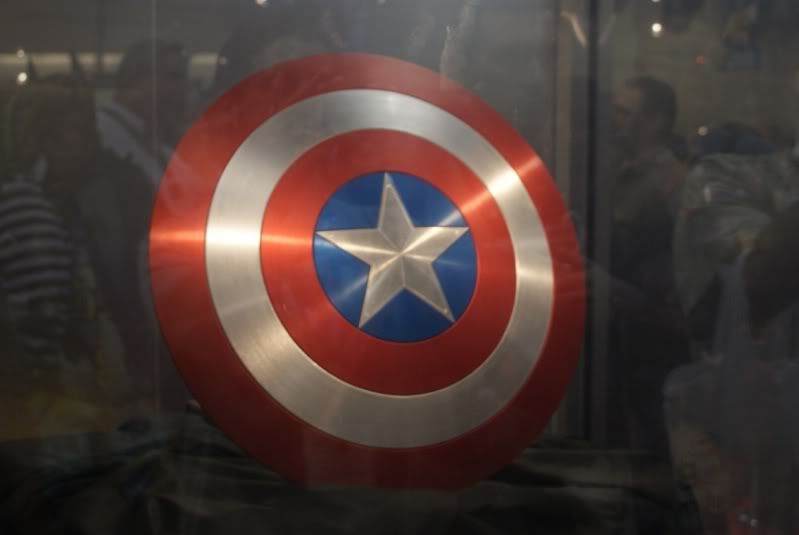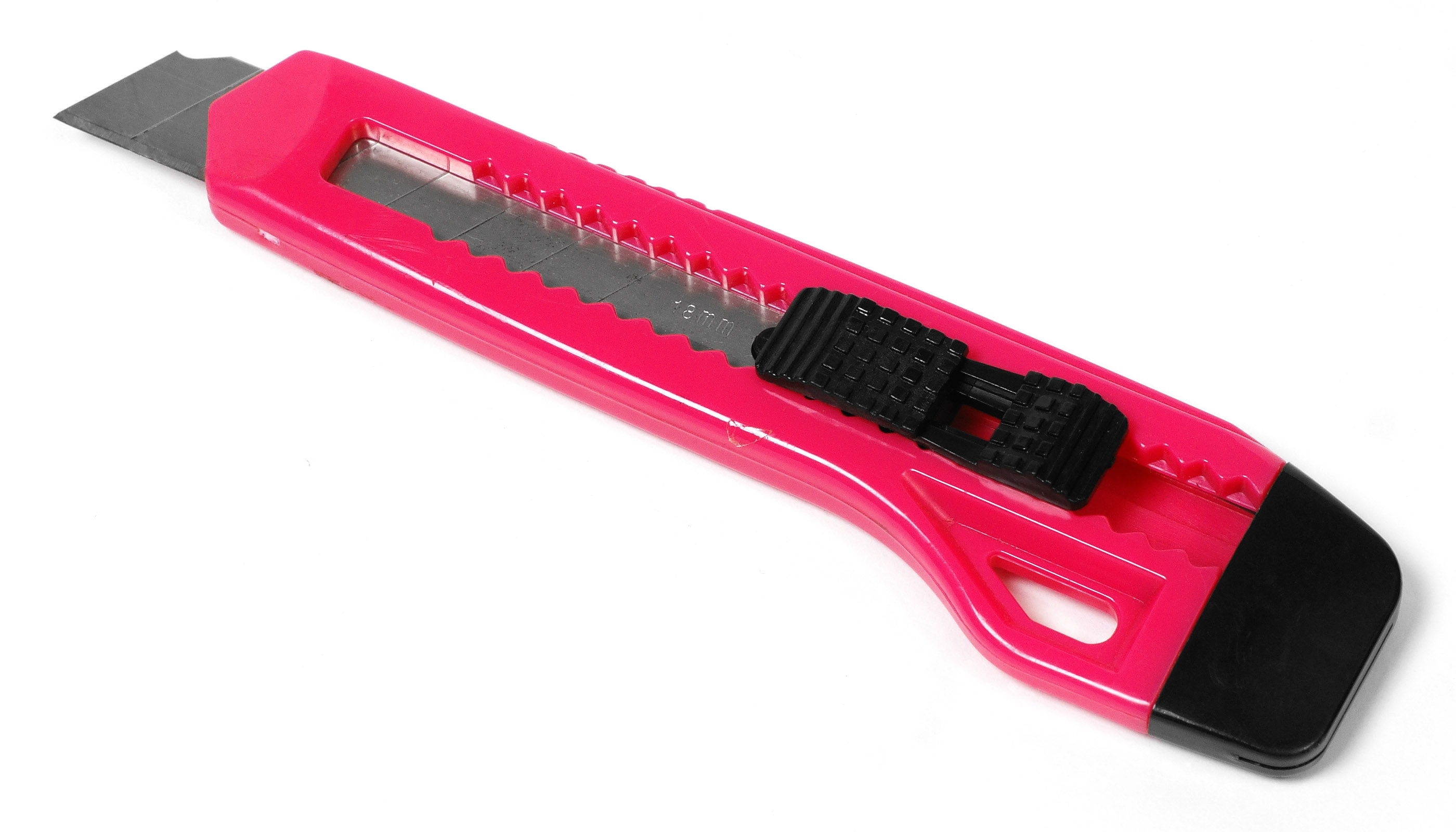Welcome back. If you have completed your shopping, the next part is all prep -- and you know what they say: measure twice, cut once.
One of the benefits of this build is that the cutting is actually rather simple -- 4 circles and a star. When you have the right tools for the materials you are using, this won't take more than an hour.
In the Bill of Materials post, we noted that you needed to drill a pilot hole for a tack at at the 1" mark. This is probably the most important prep step for your tools because this hole creates the center mark for your compass. If you have that hole too wide, or off center, or in the wrong place, the rest of your circles will be sloppy at best, or very uneven at worst.
Before we cut anything, let's look at the measured drawing of the mat board:
 |
| CLICK TO ENLARGE |
We're not building to machine tolerances here, so we're only marked up to the nearest quarter-inch. But before you mark anything, you have to get your marking tool set up, and that means drilling the pilot holes in your marking tool according to this drawing. Notice that all the measures are of the radius, not the circumference -- that's because these will be the marking holes you make in the tool. For those who are new to this sort of stuff, that means drilling holes in the compass at these marks: 6", 6-3/4", 7", 9-3/4", 10", 12-3/4", 13", 16". See: if the center of your compass sits at the 1" hash mark on the ruler, all the other points have to be relative to that center mark -- so the radius of 5" is measured by the pooint on your ruler of 6" (6" - 1" = 5").
If you use a simple 1/8" bit, the holes should be wide enough for just the tip of your pencil to slip in and mark the board.
Before you drop the compass down on the mat board the first time, measure the board on the short edge and put down a hash mark at the midpoint. Then measure the distance of that hash mark down the log side of the board so you can create a point in the middle of the board toward one end. The point here is to leave as much scrap at the bottom of the board as possible. (we will need it in future versions of the project).
 |
| CLICK TO ENLARGE |
Once you have the middle point marked, drop your compass in and draw the circles on the first board as noted in the measured drawing. Repeat the marking process for the second board, but trace out the circles from the second board in the drawing.
 |
| CLICK TO ENLARGE |
Before we start cutting, we need to trace out the star for the center of the shield, and as the measured drawing shows you, you'll do that on the first board which has the small 5" circle on it.
This may sound ridiculous to the real builders out there, but to make the star you need a protractor. Some of you are clever enough to make it with the compass, but we don't want this project to wash out anyone who failed engineering drawing in trade school. An American star has 5 points, all points the same distance from each other. If we're drawing it inside a circle, that means that each point is 72° away from its two neighbors.
 |
| CLICK TO ENLARGE |
The final prep step is to put some sort of cutting surface under your mat boards to ensure your cuts will go all the way through the board, and not mark the floor under your cuts. I used a scrap piece of mat board underneath. If you cut these pieces on your Mom's linoleum or your hard wood floor, you will mark up the floor and you are taking your life into your own hands. Remember: Frank said to put something under the boards you are cutting to avoid this problem. My homeowner's insurance does not cover your lack of caution.
Next we can start cutting, but we're not free-hand cutters at this blog. We want not to cut ourselves, but we definitely want to cut out circles. That's where this crazy wooden compass serves a double duty. To use it, first put on some safety glasses and ...
SAFETY TIP: if you do NOT want to cut yourself, follow my instructions below to get a sharp tip on your utility knife. If you CANNOT follow those instructions, or DO NOT READ THEM, you will cut yourself, and that will be your own fault. I can;t stop you from using tools the wrong way, and this is my warning to you: if you don't snap the tip the right way, you will hurt yourself. EXERCISE CAUTION WITH SHARP TOOLS.
... take your utility knife in your left hand. Take a pair or reliable pliers in your right hand. Set the blade to extend so that the first scored mark is lined up with the edge of the handle. While holding the tip of the knife with the pair of pliers, bend the blade at the scored mark. Crack off the old tip along the scored mark to give yourself a new, sharp tip. Dispose of the shard of blade safely and immediately so out don't step on it or worse.
Now make sure the center of your compass is set correctly, and set your knife on the measured mark of the ruler corresponding to the widest-radius mark on the board. Press down firmly so the tip of your knife bites into the paper, and the edge of your knife bites into the wooden ruler. If you set the blade properly, you can simply pull the blade along your guide mark and the compass will assist you by keeping the blade at the correct point on the circle's circumference.
 |
| CLICK TO ENLARGE |
Pull the blade toward the ruler, on the guide mark, and press down at the same time, You may need a helper to hold the center pin of the compass in place as you cut, and you may need to make more than one pass to cut all the way through the mat board.
 |
| CLICK TO ENLARGE |
Continue for each guide line until you have something left which looks like this:
 |
| CLICK TO ENLARGE |
Those of you who are still with us and not dreaming of other things will notice that this picture has some circles on the right which are not in the measured drawing. We'll come back to those a long way down the road. When you are done, you should have the 4 circles on the left, plus a circle with a star traced on the center.
One last thing: I think this method is a massive improvement over the one from the video which inspired this build for two reasons: you don't have to puzzle the template together from a bunch of printed pages, and the problem of gluing down template pieces in order to make your cuts is eliminated. This first step can be completed in less than an hour if you are anywhere near handy with the knife and the compass.



































